MANAGEMENT OF HEAT STRESS IN COWS

Heat stress is a major issue farmer face during the hot months of the year. Heat stress not only reduces the milk production but also affects the fertility of the animals.
Cows generate heat by digesting their food and producing milk. They also absorb solar light when out in the sun. This plays an important role in adding to their body temperature as compare to they get rid of through respiration, sweating and results in heat stress.
Major symptoms of heat stress are high body temperature, high panting rate, sweating and standing time.
MAJOR DRAWBACKS OF HEAT ISSUE
Heat stress results in a great economical loss in the following ways:
Lactating cows reduced feed intake when caught heat stress results reduction in milk production and pregnancy.
It also leads to increase death rates, lameness, disease frequency and days open.
Pregnant cow gestation period get shorter giving birth to weak calves with weak immunity and low milk production ability.
Lactating cows reduced feed intake when caught heat stress results reduction in milk production and pregnancy.
It also leads to increase death rates, lameness, disease frequency and days open.
Pregnant cow gestation period get shorter giving birth to weak calves with weak immunity and low milk production ability.
HOW WE KNOW THAT COWS ARE HEAT STRESS
Physical appearance
Cows with severe heat stress usually breathe with their mouths open and pant with their necks extended. They appears to be lethargic and unsteady.
Cows with mild heat stress remains asymptomatic.
Cows with severe heat stress usually breathe with their mouths open and pant with their necks extended. They appears to be lethargic and unsteady.
Cows with mild heat stress remains asymptomatic.
Body temperature
High body temperature is the most common and direct measure of having heat stress.
Normally the body temperature of an adult cow is 101.5 to 102.5 degrees F. if the temperature goes high than this it’s an alarm that the cow is suffering from heat stress.
If more than 5 cows have higher temperature than normal in the herd, it indicates the seriousness of the situation.
High body temperature is the most common and direct measure of having heat stress.
Normally the body temperature of an adult cow is 101.5 to 102.5 degrees F. if the temperature goes high than this it’s an alarm that the cow is suffering from heat stress.
If more than 5 cows have higher temperature than normal in the herd, it indicates the seriousness of the situation.
Respiration Rates
Respiration rate also indicates the presence of heat stress in cows.
Normal respiratory rate of an adult animal is 40 to 60 breathes per minute.
If more than 10% of cattle have respiratory exceeding 100 breathes per minute indicates that cows are suffering from heat stress.
Respiration rate also indicates the presence of heat stress in cows.
Normal respiratory rate of an adult animal is 40 to 60 breathes per minute.
If more than 10% of cattle have respiratory exceeding 100 breathes per minute indicates that cows are suffering from heat stress.
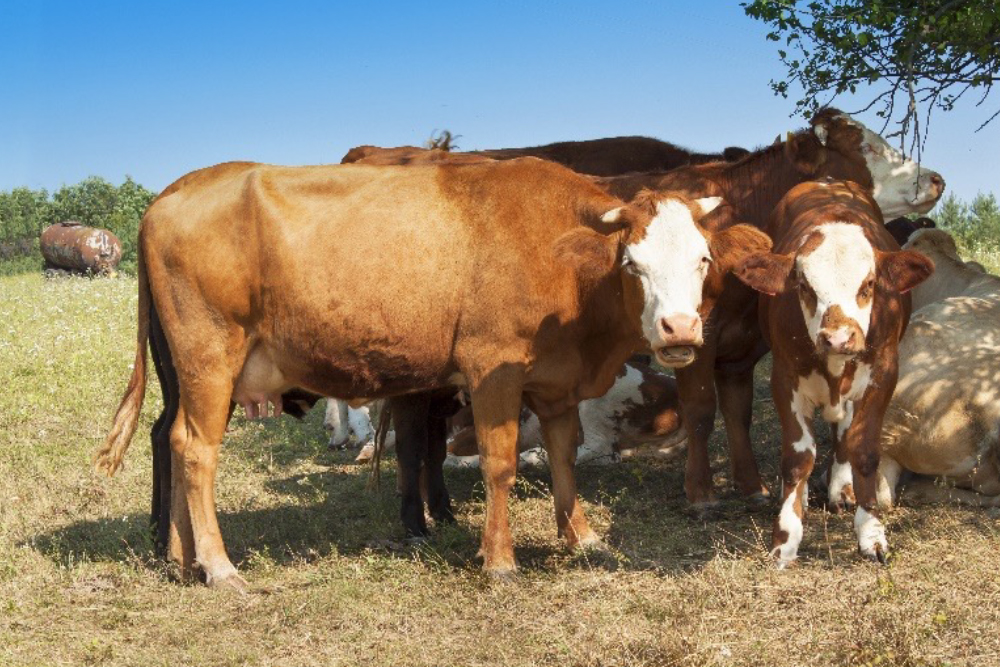
Milk production
Decrease in milk production is one of many symptoms of heat stress.
Acute or milk heat stress results in decrease of milk production about 2.5 lbs. per head per day.
Mild to moderated heat stress shows about 6 lbs. milk reduction per head per day.
Moderate to severe heat stress causes about 9 lbs. milk reduction per head per day.
Severe heat stress can be life threatening and results in 10 lbs. milk reduction per head per day.
Mild to moderated heat stress shows about 6 lbs. milk reduction per head per day.
Moderate to severe heat stress causes about 9 lbs. milk reduction per head per day.
Severe heat stress can be life threatening and results in 10 lbs. milk reduction per head per day.
STEPS TO CONTROL HEAT STRESS
Multiple practices can be used to manage the body temperature of cows during warm season. Some of them are as follows:
SHADE
Shade plays an important role in reducing the solar heat thus improving cattle body temperature.
Well ventilated barns and pole sheds are best options for providing cool shades to cows. Other than these there are various other shade building options available for this purpose.
While providing shade to cattle make sure that all the cows get enough area under shade and their comfortability may not get compromised.
Well ventilated barns and pole sheds are best options for providing cool shades to cows. Other than these there are various other shade building options available for this purpose.
While providing shade to cattle make sure that all the cows get enough area under shade and their comfortability may not get compromised.
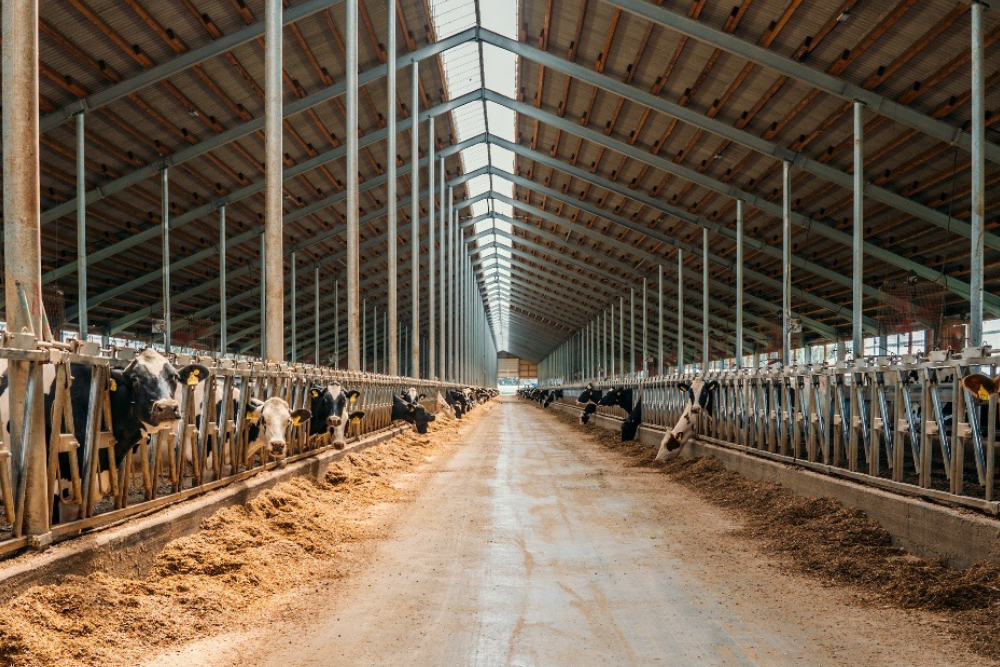
COOLING FANS
Well ventilated barns are good options as they have plenty of space for air exchange inside and outside. During extreme hot weather make sure to provide as much air exchange as u can. About 40 to 60 exchanges per hour.
Tunnel ventilation brings air in at one end of a barn and exhausts it out the other.
- Size fans and inlets correctly and make sure the fans are well maintained and inlets are open to get the desired air velocity.
Cross ventilation brings air in on the side of the barn and exhausts it out the other side.
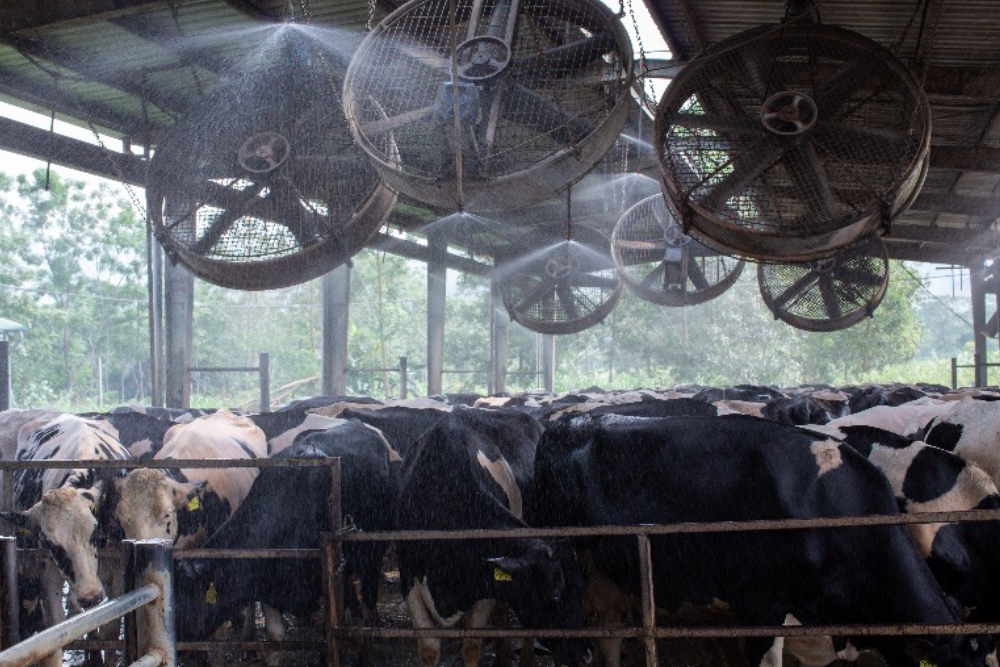
Natural ventilation mainly depends on the wind in hot days, which is rare so instead of depending on it farmers should provide artificial cooling and air exchange systems like artificial ventilators, exhaust fans etc.
COOLING WITH WATER
Water sprinkles and misters are another good option for cooling the cows during hot periods of the day. Sprinkles wet the cows body and body heat is use to evaporate that water resulting in cooling of the body. Similarly, misting systems cools the air by using heat in the air for evaporating purpose. They may increase the humidity level of the air but if the barns are well ventilated then this can easily be resolved.
- Misters are sprinkles are more effective during drier weather.
- Sprinkles needs time between on and off for the evaporation of water.
- Avoid excessive sprinkling as they may cause udder which lead to mastitis.
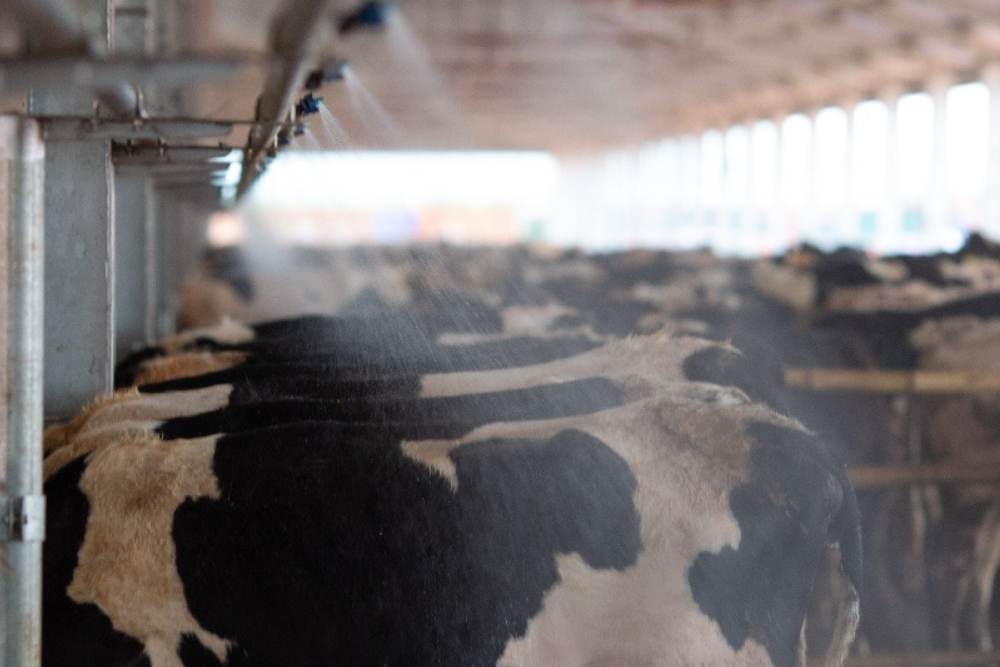
WATER FOR DRINKING
During hot days, hydration place an important role in keeping the animal body temperature near normal in both during heat stress and cold stress.
- In hot weather temperature ranges 90 – 95-degree F, a lactating cow producing 25-30liters of milk. milk consumes about 25 to 30 gallons of water per day.
- There should be enough space for drinking per cow, increase this space during hot days.
- Make sure water flow and water quantity should be enough to cope the cattle amount.
- Water should not be hot enough that may be difficult for cos to drink. So replace the water in trough timely.
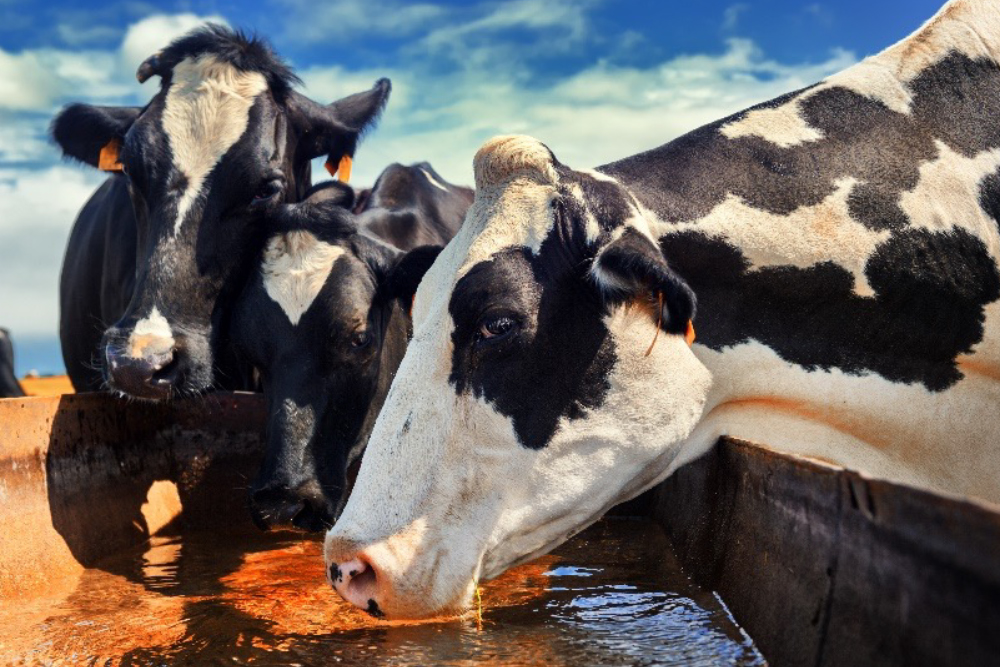
HOLDING AREA COOLING
- Milking center holding area needs to be well ventilated and cool in arm water to avoid heat stress.
- Cows stay crowded for hours resulting in stuffiness, suffocation and temperature rise, giving negative impact on cattle health.
To minimize potential problems with animal welfare, managers and farmers need to recognize and monitor the symptoms of heat stress so that it may not affect the milk production and reproduction and causing unbearable loss to them.
